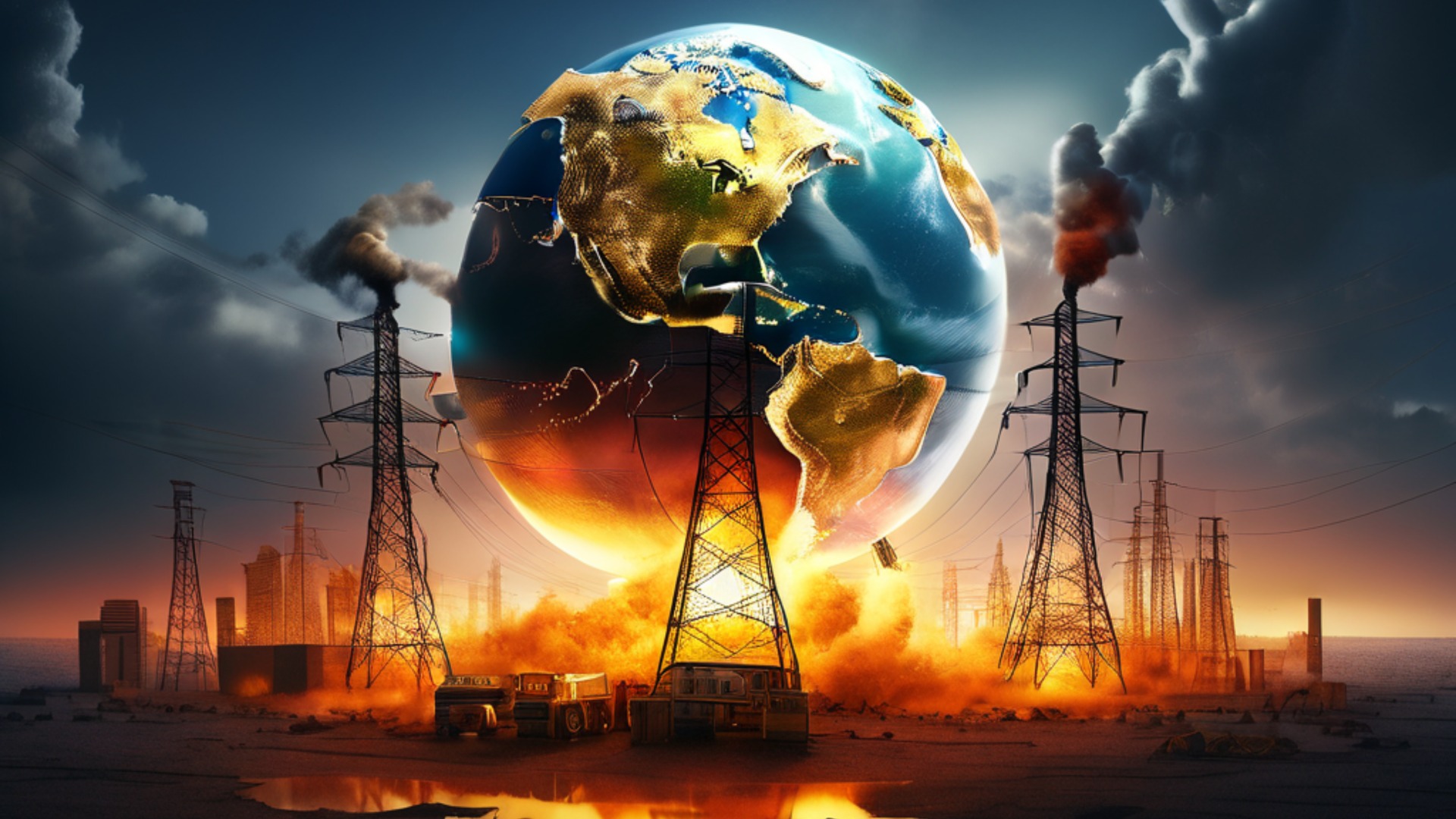The global energy crisis has reached unprecedented levels, driven primarily by soaring oil prices. Oil is the backbone of modern economies, fueling industries, transportation, and even daily human activities. As oil prices rise, the impact is felt across various sectors, from individual consumers to large corporations and governments. The current surge in oil prices has resulted from a combination of geopolitical factors, production limitations, supply chain disruptions, and growing demand, particularly as the world rebounds from the COVID-19 pandemic. This comprehensive analysis will explore the causes of rising oil prices, their impact on the global economy, and potential solutions to mitigate the crisis.
Root Causes of the Oil Price Increase
1. Geopolitical Instability
Geopolitical conflicts, particularly in regions rich in oil reserves, have significantly affected oil prices. A prime example is the Russia-Ukraine war, which has created profound disruptions in the global energy market. Russia, one of the world’s largest oil producers, faced international sanctions, reducing the supply of Russian oil to Europe and other regions. European nations, heavily dependent on Russian energy, have been forced to find alternative sources, contributing to the overall spike in global oil demand and prices.
Beyond the conflict in Ukraine, the Middle East continues to be a region of volatility. Iran, facing sanctions related to its nuclear program, and Saudi Arabia, a leading OPEC member, play key roles in influencing oil markets. Political unrest, supply cuts, or tensions in these countries can immediately create supply shocks, pushing prices upward drastically .
2. OPEC+ Policies and Supply Constraints
The Organization of Petroleum Exporting Countries (OPEC) and its allies, collectively known as OPEC+, play a crucial role in determining global oil supply. Over the past year, OPEC+ has taken a cautious approach to increasing production despite rising global demand. By limiting the amount of oil available on the market, they have maintained elevated prices. This strategy helps oil-producing nations stabilize their revenues but puts pressure on consumers and importing countries.
Many oil-producing nations also face internal production constraints. Infrastructure challenges, underinvestment in new oil fields, and aging facilities have reduced the ability to ramp up production quickly. Furthermore, some countries have chosen to keep production low to maximize profits rather than flooding the market with oil.
3. Post-Pandemic Demand Surge
As the world economy began to recover from the COVID-19 pandemic, demand for energy, particularly oil, surged rapidly. Industries resumed operations, transportation rebounded, and consumers returned to travel and other activities that depend heavily on fuel. However, the global oil supply has struggled to keep pace with this renewed demand.
During the pandemic, many oil companies reduced their exploration and production efforts, and these cutbacks have had lasting effects. Oil fields that were shut down or idled cannot immediately be brought back online, leading to supply constraints at a time when demand is increasing.
4. Shift Toward Renewable Energy and Environmental Regulations
The global push toward green energy and environmental sustainability has also played a role in shaping the oil market. Governments, particularly in Europe and North America, have implemented policies aimed at reducing reliance on fossil fuels. These policies include stricter environmental regulations, carbon pricing, and incentives for renewable energy. While these initiatives are essential for long-term climate goals, they have led to decreased investment in oil production, exploration, and refining.
In addition, the shift toward renewable energy has created a transitional phase where demand for traditional energy sources, like oil, remains high, but investment in those industries is diminishing. This imbalance between energy demand and the declining supply of oil has contributed to rising prices.
5. Supply Chain Disruptions and Natural Disasters
Natural disasters can have an immediate and devastating effect on oil production. Events like Hurricane Ida in 2021, which disrupted oil production in the Gulf of Mexico, highlight the vulnerability of oil supplies to unforeseen events. Similarly, other supply chain disruptions, such as bottlenecks at major shipping ports, trucking shortages, or refinery outages, exacerbate the problem.
In some cases, regions heavily dependent on oil imports have faced difficulties securing timely shipments due to logistical delays. This lack of timely delivery has created localized shortages, further inflating prices as competition for available oil grows.
The Economic Ripple Effect of Rising Oil Prices
1. Inflation and Rising Consumer Costs
One of the most visible impacts of rising oil prices is inflation. As oil prices climb, the cost of producing and transporting goods rises. This, in turn, leads to higher prices for everyday goods and services, from food to consumer electronics. Many industries pass these increased costs on to consumers, leading to inflationary pressures.
For instance, airlines increase ticket prices due to higher fuel costs, while logistics companies raise shipping rates. In manufacturing sectors, raw material costs, including plastics and chemicals derived from oil, also increase, driving up production expenses. All of these factors contribute to global inflation, squeezing consumers’ disposable income and reducing purchasing power.
2. Impact on Transportation and Travel
Transportation is one of the sectors most directly affected by rising oil prices. As fuel becomes more expensive, so too does the cost of operating vehicles, airplanes, and ships. Freight costs increase, leading to higher prices for goods, while public transportation systems face rising operational expenses. Many companies may pass these additional costs onto their customers through price hikes, further exacerbating inflation.
For consumers, higher gas prices mean increased expenses for commuting and traveling. In countries where public transportation infrastructure is inadequate, the impact is particularly severe. The tourism industry, which was already hit hard by the COVID-19 pandemic, faces additional challenges as high fuel prices increase the cost of air travel, further reducing consumer demand.
3. Impact on Emerging Economies
Oil-importing countries, especially in the developing world, bear a disproportionate burden from rising oil prices. Many emerging economies depend heavily on imported oil to power their industries, transportation, and infrastructure. As oil prices rise, these nations face balance of payment issues, leading to potential financial crises. The increase in oil expenditures reduces the funds available for development projects, healthcare, and education.
Additionally, the devaluation of local currencies, caused by the outflow of foreign exchange, exacerbates inflation in these economies. This, in turn, leads to social unrest, as citizens struggle to cope with rising living costs. For instance, countries like Sri Lanka and Pakistan have faced energy crises as the rising cost of fuel drains foreign reserves and puts additional pressure on their already strained economies.
4. Impacts on Global Trade and Industry
The oil price surge has had wide-ranging effects on global industries, particularly energy-intensive sectors like manufacturing, agriculture, and logistics. In manufacturing, rising energy costs increase the cost of production, making goods more expensive to produce and sell. The agricultural sector also feels the pinch, as the cost of running machinery, irrigation systems, and fertilizer production rises. This creates a feedback loop, as higher production costs lead to increased food prices, further driving inflation.
In terms of global trade, increased fuel costs raise the price of shipping goods internationally. For companies reliant on global supply chains, this results in higher operational costs, delayed shipments, and more expensive products for consumers.
Future Outlook: Can the Crisis Be Averted?
1. Embracing Renewable Energy
The long-term solution to the global energy crisis lies in renewable energy sources like solar, wind, and hydropower. Governments and corporations are increasingly investing in clean energy technologies to reduce reliance on fossil fuels. By expanding the use of renewables, countries can decrease their vulnerability to volatile oil markets and protect their economies from future price shocks.
2. Diversification of Energy Sources
Diversifying energy sources is a key strategy for mitigating the impact of rising oil prices. Countries should invest in alternative energy sources such as natural gas, nuclear power, and hydrogen. By diversifying their energy mix, nations can reduce their dependence on oil, stabilize energy costs, and ensure a more secure energy for future.
3. Energy Efficiency Measures
Improving energy efficiency in transportation, industry, and households can help reduce demand for oil. Governments can incentivize the use of electric vehicles (EVs), energy-efficient appliances, and public transportation systems to reduce oil consumption. Industries can also adopt energy-saving technologies and practices to mitigate the impact of rising oil prices.
4. Strategic Reserves and International Cooperation
Strategic oil reserves play a crucial role in stabilizing global markets during supply disruptions. Countries should coordinate with international partners to release these reserves during times of crisis. Moreover, increased international cooperation, particularly among oil-producing and oil-consuming nations, can lead to more stable energy markets.
The global energy crisis, driven by rising oil prices, presents a multifaceted challenge with widespread implications. From transportation and manufacturing to food production and global trade, the effects are being felt across all sectors of the economy. While the root causes of this crisis are complex, solutions exist in the form of renewable energy, diversification, and energy efficiency. Addressing the crisis will require coordinated global efforts and significant investments in clean energy technologies. Only by taking decisive action can the world navigate this crisis and build a more sustainable and resilient energy future.

 A.B.M. Abir
A.B.M. Abir 























